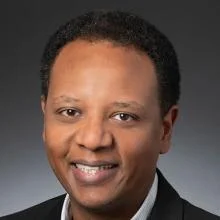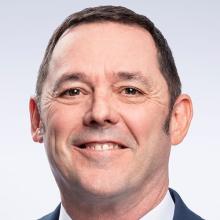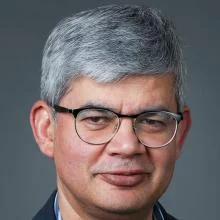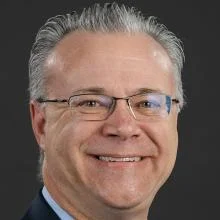Finding the right talent - and keeping it - is critical to the health and success of IT organizations today. With the new year comes an opportunity to reflect on how your organization’s hiring practices have served you to date: Is hiring taking too long? Are you asking the right questions during interviews? Can you promote from within instead of opening a new role?
We recently asked winners of the 2022 CIO of the Year ORBIE Awards in Minnesota and Georgia to share their go-to hiring approaches and the interview questions that help them surface the best IT talent to join their organizations.
If you want to shake up IT hiring in 2023, consider the advice below.
Hire for an ownership mindset

Teddy Bekele, Chief Technology Officer, Land O’Lakes: Technology is no longer strictly about development and execution or simply being an order taker; we need talent that can help influence and drive decisions. Technology is integrated into the fiber of the business, and technology professionals have a seat at the table. With this in mind, we are always looking for individuals who are curious and eager to be deeply engaged in the DNA of the business (ownership mindset).
As we look for talent with an ownership mindset, our interview conversations are focused on soft skills. We seek talent that can translate complex technical concepts into terms their stakeholders can understand. We look for agile professionals who are focused on innovating with the other stakeholders in the organization. For our team, it is more about how the work gets done and less about what gets done.
At Land O’Lakes, we have a strong purpose in tackling the world’s biggest problems, such as climate change and food security, by pioneering agricultural innovations that help the entire food, fuel, feed, and fiber ecosystems. Once we have the right talent in the door, reminding them that their work impacts the world and their communities is a big part of why many stay committed to the purpose and the organization.
Start with a workforce planning blueprint

Daniel Volk, SVP, CIO, Crawford and Company: Hiring starts with workforce planning to better understand what our needs are now, what they will be in the future, and how we can get there with current talent, recruitment priorities, and right-shore strategies. Effectively, it is about defining core competencies and skill profiles for internal/external, in-region/offshore resources and then aligning to that while working to create a pipeline of maturing lower-cost resources that will create workforce and economic stability in this challenging market.
We hire to that blueprint from a hard and soft skills perspective; you need to know exactly what you want to get it. Outside of that and specific to interviewing, I always ask a candidate what they know about my company, what they want from their careers and how fast they want to get there, how they challenge themselves, and if they have a growth plan, whether education, certification, or span of control inclusive of experiences from an IT operation, financial, and delivery perspective.
Hire talent from within

Dr. Tim Chester, VP for IT, University of Georgia: The great resignation has required us to dig deeper into our existing talent base; frankly, I think we’re better off than before the pandemic. When someone departs, we immediately tap someone on the shoulder and promote them - even if it’s an early promotion for them. Then we train them - we up-skill them if they are in their early career, and we support them with tougher projects if they are mid-career or later. We become their guardrails and help them be successful. Throughout our ranks, we have committed, ambitious professionals who know we deeply care about their career progression.
[ Also read Retaining IT talent: 5 tips for better training opportunities. ]
Prioritize referrals

Elizabeth Hoemeke, CIO, One Inc: The adage “it’s who you know” rings true when looking for top talent. I rely heavily on my network to find great talent, especially women. Resumes are curated and don’t always reflect if an individual has had a direct hand in achieving the listed accomplishments and, more importantly, how they did it. Having someone I trust vouch for them is so helpful. A resume can’t tell you about one’s curiosity, critical thinking skills, work ethic, comfort with ambiguity, and how they work with others. Typically, the people I’d want on my team aren’t cruising LinkedIn or job boards: they have to be wooed away with a better opportunity. Having a clear strategy, a diverse team, strong executive leaders, interesting work, unique experiences, and the ability to transform our industry all help me attract that talent.
Once technical competency is established, I look for mutual fit. I tend to ask questions that I call “Must Haves” and “Can’t Stands.” Solving hard problems in a rapidly growing, mature startup-style company means that we are doing some things for the first time. Greenfields are not for everyone. Also, cultural fit matters, and I am really honest about our challenges. To quote Ms. Swift, “Don’t say I didn’t warn ya.” Experience with international teams is a must, so I ask questions to determine if they can describe those cultural differences and how to adapt to them. Also important is where they want to go next to ensure I can give them that runway. It also tells me if they are looking for a job or are ready to invest in the work, our customers, and the company. It is said that people don’t quit companies; they quit leaders. Open, honest, and transparent is who I am. We have a great company that I am proud to work for, and I am impressed every day with my engineering team. Who wouldn’t want to be a part of that?
Be swift and decisive

Jean Holley, Board Director, HERC Holdings Inc & Accord Financial Corp.: Firstly, recruitment should never stop and start. You should always position your company as one that people want to work for and are “lining up” for the next available position. This starts with leadership that is people-oriented all of the time and visible, not just when a company is hiring. People work for people, and that’s often how they make their decisions.
Next, the interview approach needs to be swift and decisive, and feedback must be provided instantly. The interviewing process often reflects how the management team operates and how important the position and candidates are to the company. If there are large time gaps, with few updates, it conveys the message: “We want you maybe when we get to it.” In IT, you are often competing for a candidate – time matters. Be prepared to put an offer on the table in the last interview. It can be pending reference and health checks but put it on the table with a reply-by date. This tightens the timeframe and conveys swift decision-making on both sides. If a candidate cannot decide, they may not be the right one for your company.
Finally, answer all inquiries and replies. This is part of your reputation as a leader and for the company. Candidates’ biggest complaint is often “no reply.” Don’t be that company or person.
5 questions to ask during the interview
Consider adding these questions to your “must-ask” list during interviews.
What brings you joy?

Mary Lynne Perushek, CIO, Mortenson: Finding the right talent is always challenging regardless of market conditions. Having that talent stay engaged in the outcomes of our organization is an ongoing focus of our leadership team. During the interview process, we invite potential new team members to talk about what problems they’ve solved, customers they’ve helped, or an innovation that has given them a sense of joy and/or excitement over the past few months. We can then engage on a topic important to the candidate during the interview process and then again as the candidate becomes a team member.
What made you decide to leave your last role?

Vijay Raghavan, EVP & CTO, Lexis Nexis Risk Solutions Group: One of my favorite questions to ask of candidates during the interview process – in addition to asking about the specifics of their accomplishments, of course - is to ask them to walk me through their career decisions and their career progression. In other words, I ask them what led them to move on to the next position in their career. I usually ask them to go back about three or four positions from the current one and tell me what motivated them to look for the next role – and what circumstances caused them to want to leave the previous role.
This usually gives me a lot of insight into what drives them. It’s not about weeding out the “job hoppers.” Some candidates may have legitimate reasons to move every two or three years, so it’s more about finding out what makes them tick and what it might take for me to keep them in my organization for five years or more. Conversely, it can help surface any red flags that might tell me the candidate won’t fit in my organization, even if they have impeccable credentials.
Questions to assess skill and will

Scott Waid, SVP, Head of Technology, Atlanta Braves National League Baseball Club: My interview approach is to assess a candidate’s skill (functional and leadership) and will (motivation). Questions I typically use are:
Describe the traits of an effective leader you have worked for that inspired/motivated you. The candidate’s answer provides insights into their values and what is important to them as a leader – empathy, functional skills, leadership, etc. This will help me to determine fit within my company, my team, and me as their leader.
Where do you want to be in three years from now in your career, and how does this role help you get there? I can tell if the candidate wants my job versus any job. I can see how much they have thought about how this role will help them develop skills, which is key to engagement. I also can see if a person is more analytical and process driven or creative and free-spirited. Motivation is also a key learning from this one.
What do you do for fun outside of work? This question gets people to smile and relax (or not), and I learned something interesting about the person (hopefully). You can see what motivates and excites a person and where their passions lie. Also, I can get insights into whether the person would be better off working individually or in a team setting, which is important to me.
[ Check out essential career advice from 37 award-winning CIOs. Get a variety of insights on leadership, strategy, and career development from IT executives at Mayo Clinic, Dow, Aflac, Liberty Mutual, Nordstrom, and more: Ebook: 37 award-winning CIOs share essential IT career advice. ]





